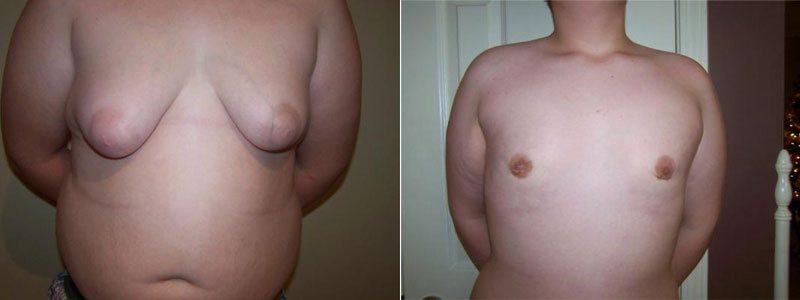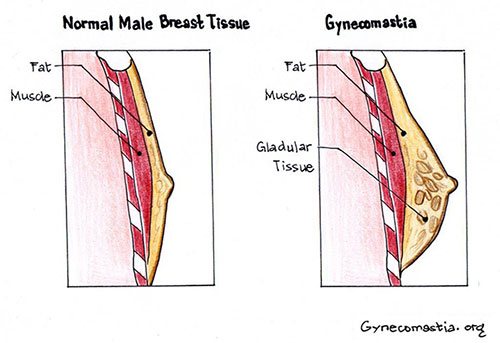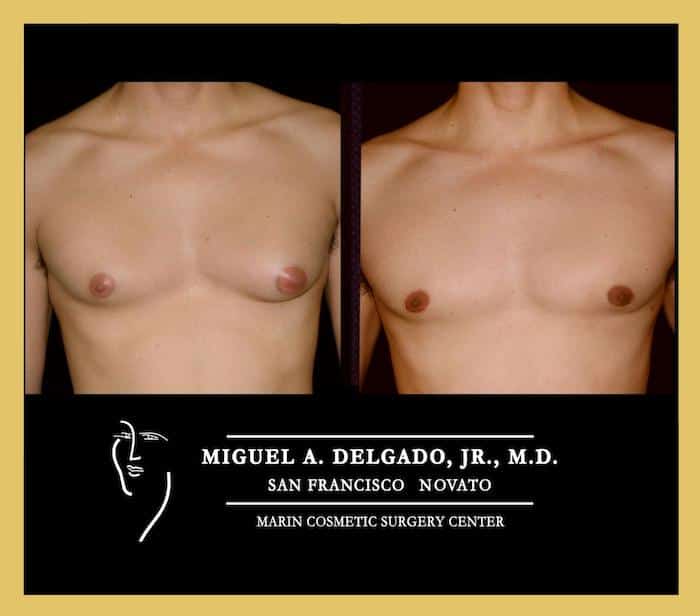Contact Us
 Dr. Delgado is a highly skilled surgeon specializing in gynecomastia surgery. Dr. Delgado has committed a significant amount of his practice to the care and education of men and boys with gynecomastia. Dr. Delgado’s practice philosophy is to provide the highest quality of patient care to the people who seek out his professional services. Dr. Delgado and his staff are committed to understanding their patients' concerns, educating them on their options, and executing the best surgical outcome for each patient. Dr. Delgado is the new owner of Gynecomastia.org since 2010. He has dedicated a significant part of his life and practice to improving the Gynecomastia.org community.
Dr. Delgado is a highly skilled surgeon specializing in gynecomastia surgery. Dr. Delgado has committed a significant amount of his practice to the care and education of men and boys with gynecomastia. Dr. Delgado’s practice philosophy is to provide the highest quality of patient care to the people who seek out his professional services. Dr. Delgado and his staff are committed to understanding their patients' concerns, educating them on their options, and executing the best surgical outcome for each patient. Dr. Delgado is the new owner of Gynecomastia.org since 2010. He has dedicated a significant part of his life and practice to improving the Gynecomastia.org community.
What Is Teenage Gynecomastia?
Adolescent gynecomastia usually occurs between the ages of 10 and 13 due to hormonal fluctuations during puberty. Also referred to as adolescent or pubertal gynecomastia, as with adult gynecomastia, this condition results in male breast enlargement with fat tissue or glandular tissue in one or both breasts.
Gynecomastia in puberty is usually caused by an elevated level of estrogen, which is common during puberty. This hormonal fluctuation occurs in up to 65% of adolescent boys. In most cases, teenage gynecomastia symptoms will disappear within two years of their development.
However, in approximately 5% of cases, gynecomastia that arises in puberty does not go away. The stubborn glandular breast tissue growth is known as persistent gynecomastia or adolescent gynecomastia. In such cases, the glandular tissue becomes firm and fibrous, and the chest will have varying ratios of fat tissue to glandular tissue. Although weight loss can decrease fat tissue and, therefore, the size of male breasts, the glandular tissue remains the same.

A 12-year old adolescent male before and after breast gland excision and liposuction surgery. with Dr Miguel Delgado M.D.
Signs and Symptoms of Teen Gynecomastia
Adolescent gynecomastia is hallmarked by the apparent sign of abnormal breast swelling. Teen gynecomastia symptoms can range from “puffy nipples” to a significant increase of glandular tissue, causing enlarged male breasts. The nipple-areola complex can also become quite large and distorted, giving it a feminine appearance. Adolescent gynecomastia symptoms can also include tenderness, pain, and discomfort.
This condition often means teenagers avoid activities that involve being shirtless, such as swimming or going to the beach, due to the embarrassment caused by gynecomastia symptoms.

What Is the Best Approach to Treating Gynecomastia in Puberty?
Gynecomastia surgery should be performed two years after initial gynecomastia symptoms start to develop. In most adolescent males, surgical correction should lead to immediate improvement. An effective and reliable surgical procedure to treat gynecomastia during puberty consists of excess breast tissue excision and liposuction. This procedure removes glandular tissue and excess fatty tissue for a permanent solution to gynecomastia in teenagers. Patients’ young, elastic, pliable skin quickly contracts back to the muscle after the gland is removed.
However, this ability decreases with age, so it is wise to correct gynecomastia in puberty as soon as possible. Removing the glandular tissue is a permanent solution for male gynecomastia unless the area is stimulated to grow again.

Puffy Nipples” before and after male breast reduction surgery
Will Gynecomastia Symptoms Come Back?
Adolescent gynecomastia rarely returns following successful surgery. If the surgery is performed correctly, the procedure is normally permanent. One potentially complicating issue is that during and after puberty, hormones are still fluctuating, and the body is still in its growth phase. This usually isn’t a factor when the procedure is performed at the right age.
However, if a teenager who has received gynecomastia surgery decides to take anabolic steroids in later life, the gynecomastia symptoms may return. Various types of illness and disease and certain prescription drugs can also cause gynecomastia symptoms to return. One of the main causes of enlarged male breasts after gynecomastia surgery is due to weight gain, which can increase fatty tissue in the chest area. This fat accumulation is called pseudogynecomastia or “false gynecomastia”.
What Is the Best Age for Gynecomastia Surgery?
A parent will often notice a change in behavior when gynecomastia in teenagers starts to become an issue. This could be a reluctance to go shirtless, avoiding sports, swimming or going to the beach, and wearing larger, baggier clothes. In general, when the condition begins to affect a young man psychologically and socially in such a negative way, it is time for a discussion about gynecomastia treatment.
In many cases of gynecomastia in puberty, the excess tissue will resolve in about two years, so waiting at least that long enables an accurate gynecomastia diagnosis. If the breast volume doesn’t shrink after two years of first developing, then teen gynecomastia is likely to become permanent. Young men who have gynecomastia surgery often report an increase in confidence and feeling a lot happier.
Adolescent Gynecomastia Surgery Recovery
Young men with adolescent gynecomastia recover exceptionally well. Younger skin contracts and shrinks to the new chest contour, and usually, swelling and bruising will have almost gone within four to six weeks. Most teenagers return to school a week after gynecomastia surgery. However, it is vital to abstain from exercise for four to six weeks to allow the incisions to heal and prevent complications.
Alternative Gynecomastia Treatments
Gynecomastia treatment without surgery and treatment of gynecomastia with medication is still under investigation. To date, the Food and Drug Administration (FDA) has not approved any gynecomastia drugs that are being used “off-label” to treat gynecomastia symptoms.
Current gynecomastia medications under investigation include:
-
Tamoxifen, which blocks the actions of estrogen.
-
Danazol, a synthetic form of testosterone that prevents lowered estrogen production and increases androgen (male sex hormone) levels.
-
Dihydrotestosterone (DHT), an androgen hormone that is the active form of testosterone.
Herbal or natural treatments and off-label drugs are readily available on the internet. However, at best, they will only reduce the fatty tissue and fail to get rid of physiologic gynecomastia. You can find more information about medication and the use of off-label drugs in this post about non-surgical gynecomastia treatments.
Having enlarged male breast tissue can be embarrassing and can greatly affect a young man’s psychological health, emotional health, and social well-being. Luckily, gynecomastia can be accurately diagnosed using the gynecomastia pinch test combined with other tests. Furthermore, gynecomastia surgery is available no matter how severe the condition is, and all are proven to be successful and effective.
For personalized information about gynecomastia plastic surgery procedures, please complete Dr. Delgado’s inquiry form.
Miguel Delgado, M.D., F.A.C.S is a world-renowned Board-Certified Plastic Surgeon granted by the American Board of Plastic and Reconstructive Surgery and a member of the American Society of Plastic Surgery and Aesthetic Society. Dr. Delgado has a surgical practice solely dedicated to cosmetic plastic surgery. He specializes in gynecomastia surgery and is the medical director of Gynecomastia.org, the oldest and largest gynecomastia forum dedicated to supporting, educating, and providing solutions for men with breast enlargement. Dr. Delgado celebrates 30 years of practice in San Francisco, California. He was voted the “Best Plastic Surgeon of 2017-2021”.
Gynecomastia.org does not provide medical advice, treatment, or diagnosis.
©Copyright 2020 Gynecomastia.org. All rights reserved. Use and access to this site are subject to the terms and conditions as set out in our Legal Statement and Privacy Statement.
The content on Gynecomastia.org is for educational purposes only. It is not intended as medical advice. It does not replace the need to meet with a physician who will accurately diagnose your condition and suggest treatment options.

